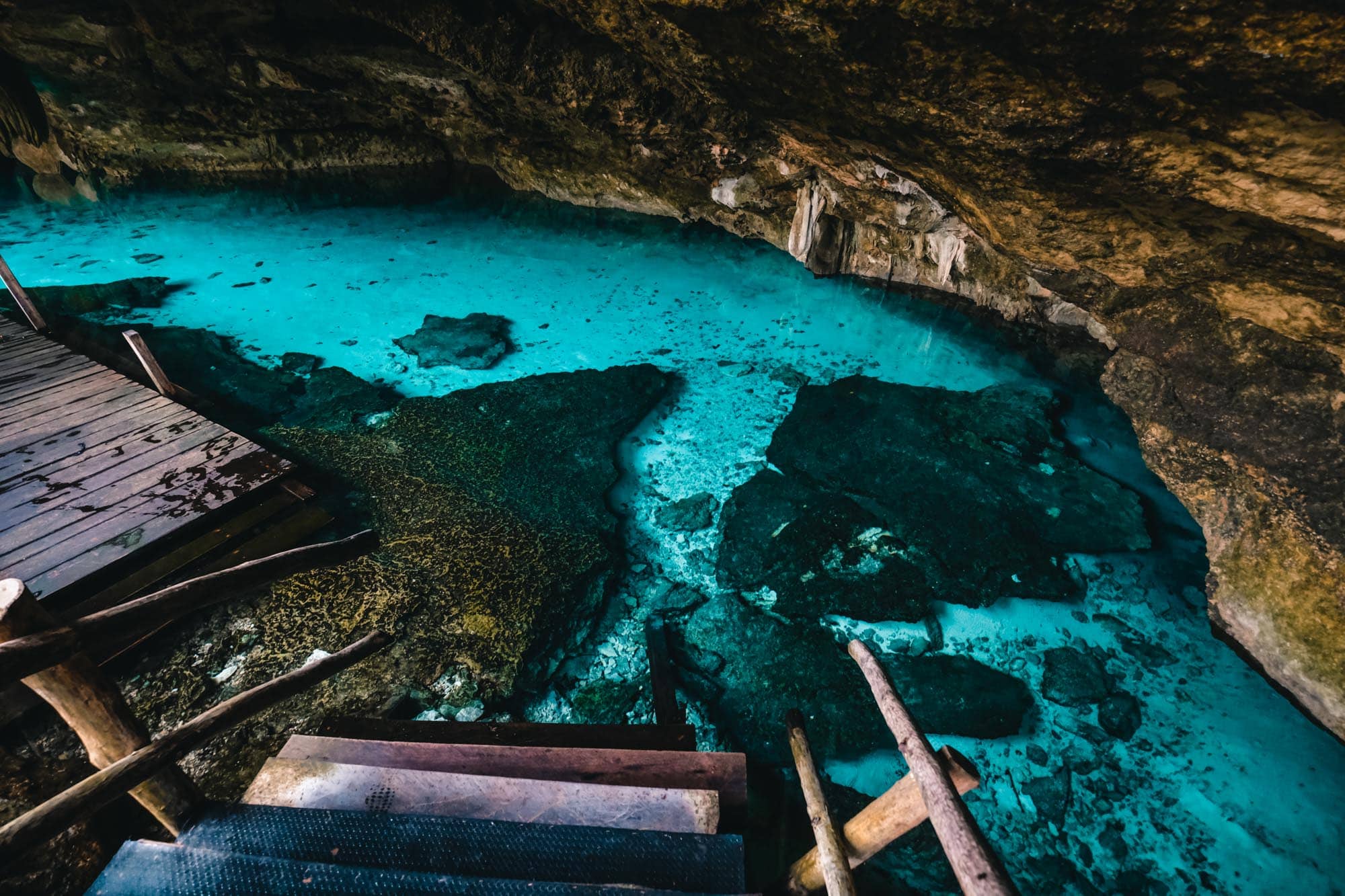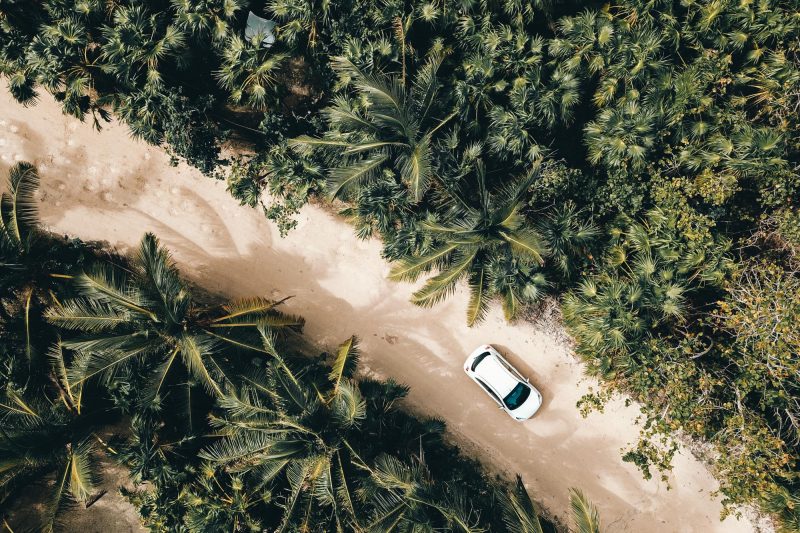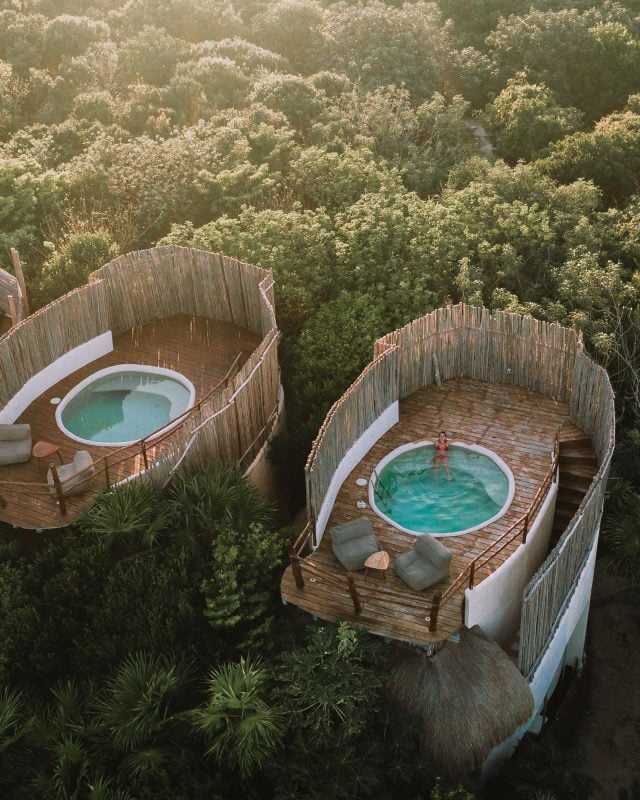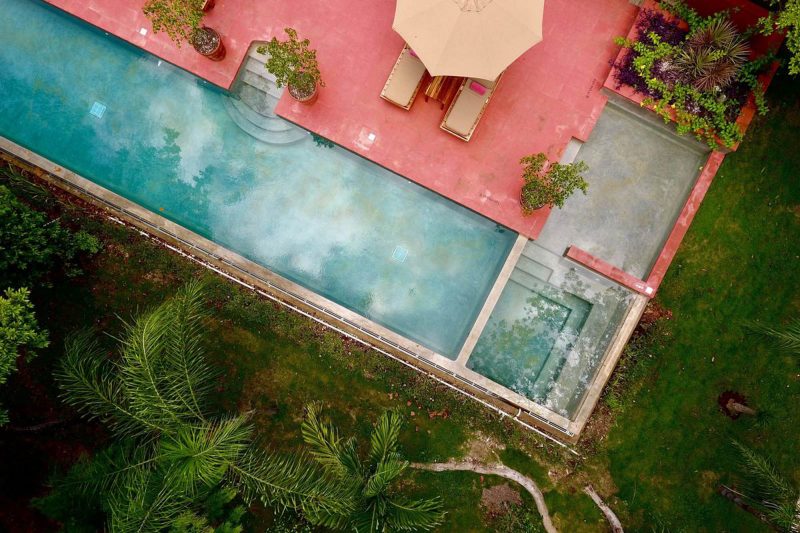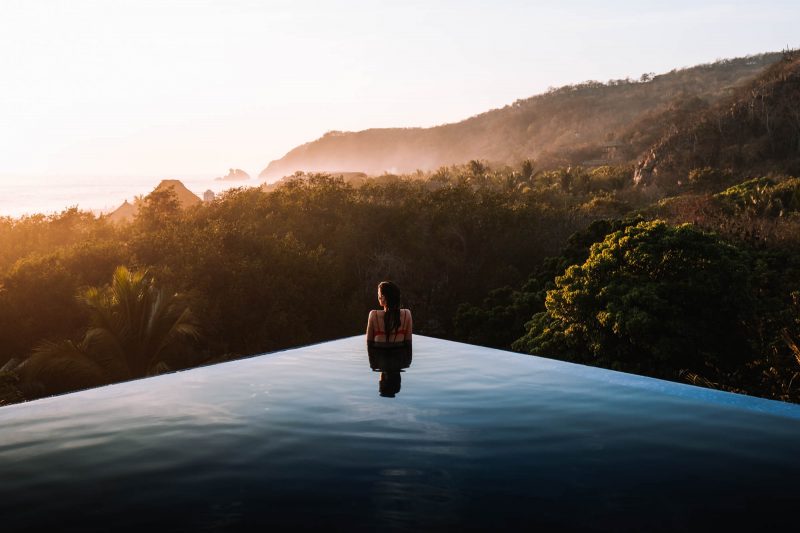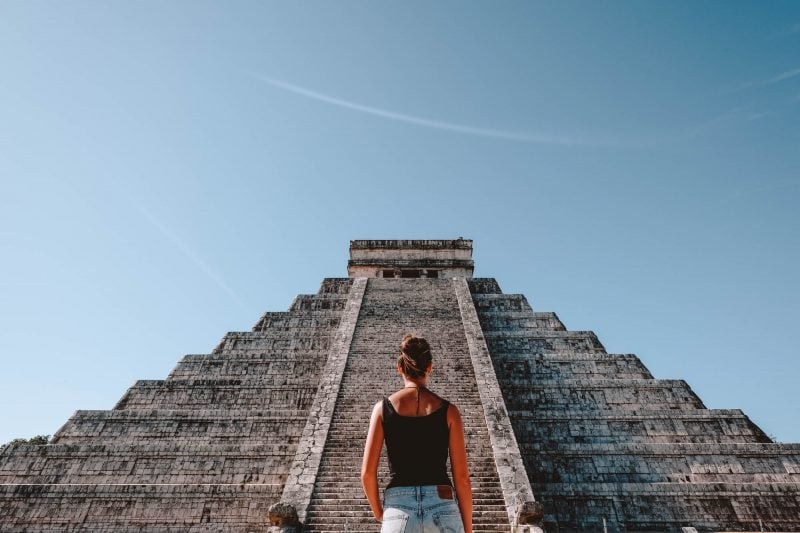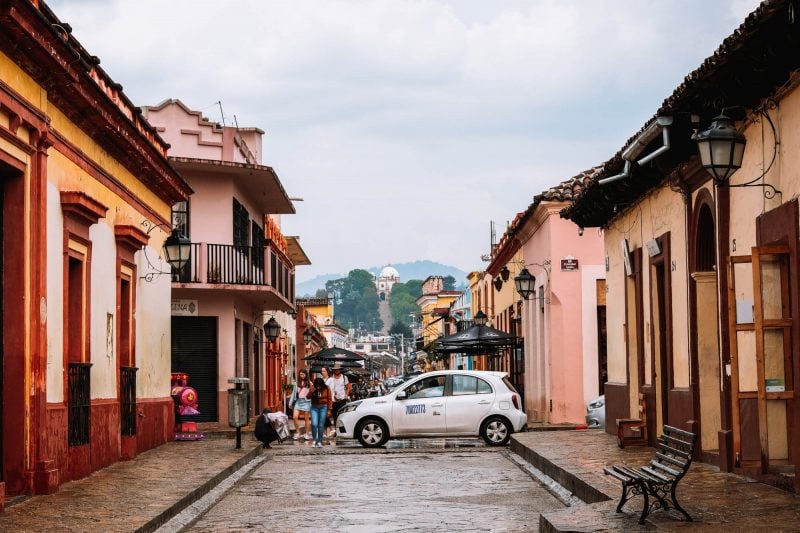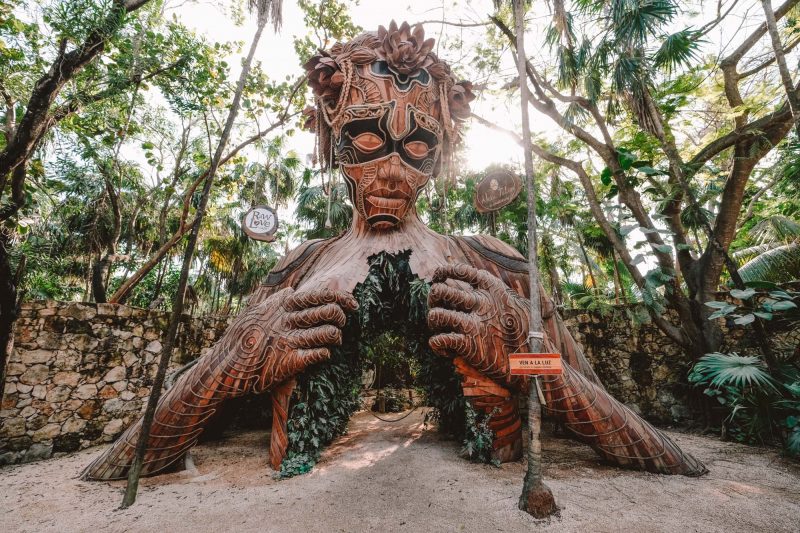Mexico’s Yucatan Peninsula is known for its bounty beaches and Mayan temples, but there’s so much more to discover! Yucatan is home to thousands of cenotes, natural wonders that can be found hidden dozens of meters underground and some right on the surface. You can enjoy snorkeling in the crystal-clear waters, where small fish will sometimes nibble at your toes. So, grab your bikini or swim trunks, put on your snorkel, and get ready to have some fun with our tips!

What is a cenote?
A cenote is a natural pool or cave that is filled with freshwater that typically filters through the limestone bedrock. These cenotes held a great deal of spiritual significance for the Maya people as they were believed to be the gateway to the underworld, which is one of three worlds where their gods reside. Back in the day, the Maya would perform religious ceremonies and even human sacrifices at these cenotes. Fortunately, that’s not the case anymore! Nowadays, you can observe fish and even turtles swimming in these cenotes. Additionally, you’ll often see plants with roots that extend into the water forming lianas that can reach up to several meters in length.
Update: Unfortunately, it is now mandatory to wear a life jacket at many cenotes. You get/rent these at the entrance.
How did cenotes originate?
To answer this question, we need to travel back in time to approximately 66 million years ago. At that time, a massive meteorite struck the earth after a fireball appeared in the sky. This meteorite impact, which is estimated to have been around 15 kilometers in diameter, marked the beginning of the Ice Age and the extinction of the dinosaurs. As a result of this impact, the Earth’s crust shifted, causing cracks and fissures to form in the rock layers beneath the surface of the Yucatan region.
Despite the incredibly hard rock in this region, water has managed to seep through these cracks and fissures, resulting in erosion that has created vast underground corridors. The cenotes that we see today are typically much larger than their surface area suggests, serving as mere entrances to these intricate mazes of groundwater corridors.

Visiting Cenotes in Mexico
We’ve had the pleasure of visiting Yucatan on two separate occasions, which allowed us to explore many different cenotes. While some of the cenotes we visited were a bit underwhelming, others surpassed our expectations. In this article, we highlight seven cenotes that are definitely worth a visit, although some may seem similar to one another. It’s unlikely that you’ll have time to visit all seven, so pick and choose based on your interests and itinerary.
It’s important to note that cenotes in Mexico have become increasingly popular in recent years, thanks in part to social media platforms like Instagram. As a result, they can get incredibly crowded, so we recommend visiting them as close to opening time as possible. This way, you’ll have the opportunity to appreciate the natural beauty of these wonders without being surrounded by a lot of people.
Cenote Dos Ojos
The name “Cenote Dos Ojos” translates to “two eyes” in Spanish, and it’s not hard to see why. The cenote is actually made up of two distinct pools of water, which resemble two large eyes. There’s a ring of beautiful blue water that surrounds an island in the middle, which looks like a pupil. What makes Cenote Dos Ojos truly remarkable is the incredibly clear water, which makes it an excellent spot for taking beautiful photos. Additionally, the network of tunnels and caves that run beneath the surface make this a popular destination for experienced divers looking to explore the cenote’s hidden depths.
Cenote Dos Ojos is located 20 kilometers north of Tulum on the road to Playa Del Carmen

Cenote Samula
This cenote is underground and at the very top of the cave is a hole through which a ray of sunlight shines in. This ray of sunshine makes Samula incredibly beautiful and special. Therefore, try to plan your visit on a sunny day. In this cenote you will find very large stalactites and crystal clear water.
Cenote Samula is located 7 kilometers from Valladolid
Cenote Ik Kil
Near Chitzen Itzá, just a few kilometers away, is Cenote Ik Kil. This is one of the most famous cenotes in all of Mexico. Almost all tours go first to Chitzen Itzá and then to Ik Kil. Fortunately, it’s often less crowded in the morning since most people start their day with a visit to the nearby temple. As you walk down the steps and into the cenote, you’ll immediately notice the 45-meter wall that’s covered in dozens of different types of plants. Everywhere you look, there are lianas hanging down, adding to the magical and otherworldly atmosphere of the place. Cenote Ik Kil is surrounded by a beautifully landscaped garden that’s home to some of the most beautiful birds so be sure to keep your eyes open.
Cenote Ik Kil is located 40 kilometers west of Valladolid

Cenote Oxman
Less well known but certainly no less beautiful is Cenote Oxman. This cenote is somewhat similar to Cenote Ik Kil only that Cenote Oxman is a little smaller and you don’t have to share it with as many people. Through the hole at the top, many roots of trees have found their way into the water. One of the best ways to experience Cenote Oxman is to use the rope to sling yourself into the water and then soak up all the beauty that surrounds you. On your way to Oxman it’s easy to take the wrong exit and miss the cenote entirely, so make sure to look for the exit that’s marked with a sign for Cenote Oxman to ensure you get to the right place.
Cenote San Lorenzo Oxman is located a few km outside Valladolid

Cenote Calavera
This is a very different cenote from the rest of the cenotes in this thread. In fact, Cenote Calavera is a much smaller cenote and literally a hole in the ground that you can jump into. Once in the water, you can explore more of the cenote. ‘Calavera’ is the Spanish word for ‘skull’ but don’t worry, you won’t find any human remains in this cenote. The name comes from the shape of the cenote with one large hole resembling a mouth and two smaller holes resembling eyes. Around the cenote are some sunbeds to relax on in between swims. This cenote is so close to Tulum that you can just bike there!
Cenote Calavera is 3 kilometers from Tulum Pueblo
Gran Cenote
Along with Cenote Ik Kil, Gran Cenote is another incredibly popular cenote in Mexico. Snorkeling at Gran Cenote is fantastic. There are lots of fish swimming and you can even encounter small turtles! There are snorkels for rent but it is quite pricey so it is better to bring your own if you have one. Do keep in mind that Gran Cenote is very crowded. The entrance fee is high and it is good to know that you are not allowed to bring a camera. A GoPro or phone is allowed inside and at the entrance they check your bag.
Gran Cenote is located 5 kilometers outside Tulum Pueblo. 2 kilometers beyond Cenote Calavera.

Cenote Suytun
Cenote Suytun has gained popularity largely thanks to its appearance on Instagram. The cenote’s central platform creates an ideal location for snapping breathtaking photos. Moreover, if you’re lucky enough to be there at the right time of day, you can catch a mesmerizing beam of light shining through. However, it’s important to note that the site can get quite crowded at times, and you may find yourself waiting in line to get that perfect shot. To avoid the crowds, it’s best to visit Suytun as soon as it opens. Keep in mind, however, that you may miss out on the beautiful beam of light if you choose to visit during less busy hours.
Cenote Suytun can be found 8 km outside Valladolid
Life jackets mandatory in many cenotes
Due to several incidents in recent years, most cenotes have implemented a mandatory life jacket policy. Even if you consider yourself a strong swimmer, wearing a life vest is still required and provided at the entrance as part of the entrance fee. While it may be a bit inconvenient for those who prefer diving, it does allow for a more relaxed and enjoyable floating experience. However, at lesser-known cenotes, wearing a life jacket is still not a requirement (at least for now). For photos, unfortunately, it’s a lot less pretty.
